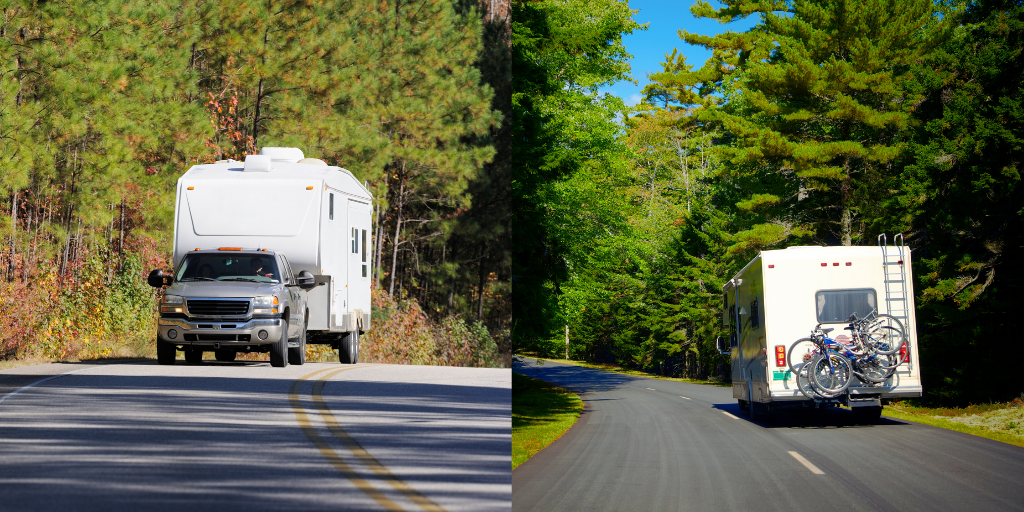When the rain and snow hit the Mitten, you’ll undoubtedly be using your brakes more often as you navigate the roadways. Larger motorized RVs typically use air brakes or a component called a hydro boost (hydraulic pressure). If you have a towable RV, then you have two sets of your typical brakes to watch and maintain: the brakes on your tow vehicle and the brakes on your trailer.
Regardless of the weather or season, it’s imperative for your brakes to be in prime condition, and any hint of a problem should be dealt with immediately. After all, your safety and the safety of your passengers depend on those brakes working as they should during your time on the road.
Test your brakes. This step is essential, because you’ll stay on top of whether your brake lights are in working order and that your brakes will work as you expect during any type of driving, including sudden stops. If you are new to the RV owner community, then take a few test drives with your RV before embarking on your trip. Get a feel for how the brakes respond and how much time it takes to stop.
Trailers use electric brake systems, which is managed using a brake controller in the tow vehicle. The brake controller sends electricity to the tow vehicle’s brake system through the trailer plug, so when you press on your tow vehicle’s brakes, the brakes on the towable RV will engage as well. A brake controller is essential for a smooth, reliable, and safe stop. Many brake controllers come with a manual override option, which can be tapped with your hand for increased brake power or to brake the trailer without applying the vehicle brakes (which could be useful to reduce or stop swaying or fishtailing of the trailer). The heavier the trailer, the more powerful the controller should be. Your tow vehicle should be equipped with the tow package to make all this possible.
Watch your dashboard. Any flashing warning light or a light that stays on continuously can indicate defective brakes and an impending brake malfunction, such as to the anti-lock brake system.
Listen and feel. Under normal driving conditions, keep an ear open for any unusual noises. Disc brakes can become worn or overheated. Some tell-tale signs of there being a problem with your brakes are: stopping power is greatly reduced, squealing or grinding noise when the brake is applied or during turns, and steering wheel vibration during braking. Do not ignore these signs and have your brakes inspected by a professional.
Keep up on maintenance. Don’t skip, for motorized RVs, oil changes, break inspections, and maintenance based on mileage and/or age. Brake fluid is used to operate the callipers to increase the mechanical pressure on the brake pad. However, this only works the way it should if there is no air in the system, in the case of hydro boost. Any air in the system will result in a reduction in brake efficiency. Sometimes, this brake fluid can get too hot, hot enough to boil. This creates steam, which is again, air. And you’re back to having a problem with brake efficiency. Change the brake fluid on a regular schedule, and get it checked at every oil change or service appointment, whether the required service involves the brakes directly or not.
A general rule of thumb: Check the brakes before every trip, or at least annually. Expect to change brakes when you replace tires. Experts recommend waiting no more than 12 months or 12,000 miles to change brake parts that have a tendency to wear.

